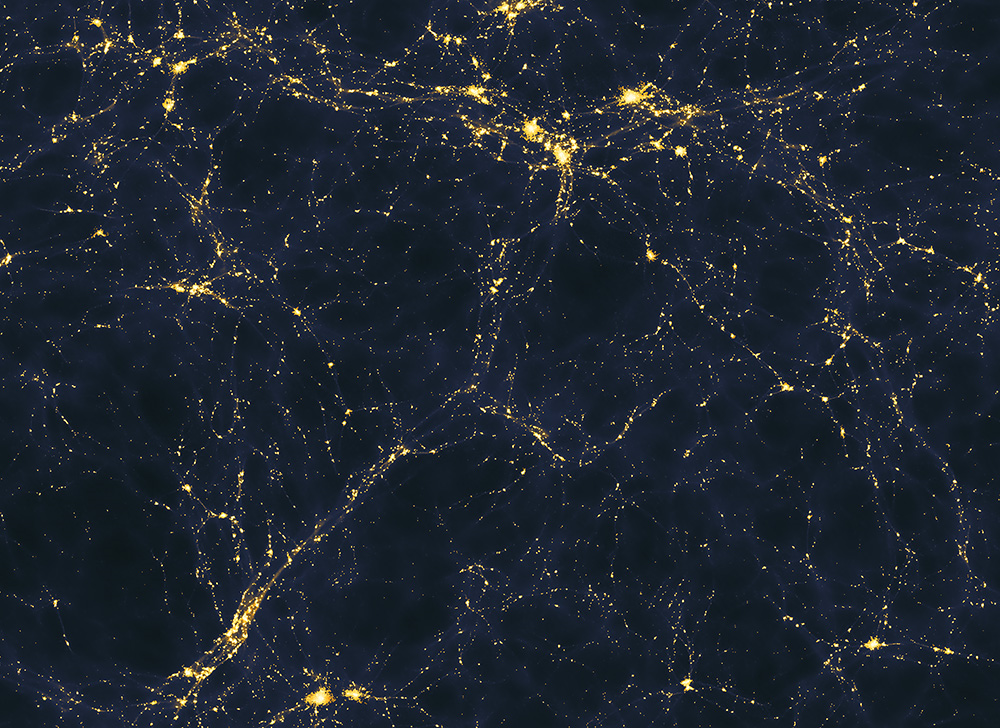This blog post was written by Andrew Pontzen.
Over this year, a few of us at UCL have been getting increasingly interested in the Lyman alpha forest. It’s a unique probe of how gas is distributed through the universe, made possible by analysing the light from distant, bright quasars. While a lot of emphasis has been placed on the ability of the distribution of gas to tell us about dark energy, we’ve been making the case that there’s more information lurking in the raw data — more here in UCL’s official press release and blog.
For press purposes our work has been illustrated by a picture from an ongoing computer simulation. But actually, one of the neatest aspects of this work is that it can be done with pencil and paper. We’ve built a rigorous framework to study how light propagates through the large-scale universe, without running a conventional simulation. Over the coming months and years we hope to build on that framework to study more about how the large scale universe is reshaped by the light streaming through it.
You can read more here:
UCL press release
What lit up the universe?
A. Pontzen
Scale-dependent bias in the BAO-scale intergalactic neutral hydrogen
A. Pontzen, S. Bird, H. Peiris, L. Verde
Constraints on ionising photon production from the large-scale Lyman-alpha forest
Wikipedia
The Lyman-alpha forest
The DESI Collaboration
The DESI Experiment, a whitepaper for Snowmass 2013

